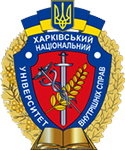Prevention of Secondary Victimisation within the Ukrainian Barnahus Model in the Context of European Standards of Justice
Abstract
The article states that in all cases where a child is subjected to abuse, authorised entities, including courts, must ensure that the child's interests are protected and their rights are upheld. Anyone involved with a child is responsible for performing their duties properly and effectively, in a friendly manner, bearing in mind the priority of the child's interests.
The lack of cooperation between representatives of the relevant services in cases of domestic violence forces children to undergo numerous interrogations, which can provoke a recurrence of their experiences and, consequently, re-traumatisation. This problem is extremely serious, given that obtaining truthful information from the child is crucial to ensuring their safety and protection, their physical and mental recovery, and the conduct of an effective investigation and trial. Unintentional discrepancies in testimony obtained at different times, in different places and by different authorised entities can lead to the child being discredited as a witness. In view of the above, interdisciplinary and interagency cooperation is identified as a decisive factor in the realisation of the rights of child victims and child witnesses of domestic violence to protection, participation, support and assistance from society.
The Barnahus model, introduced by Iceland about twenty years ago, quickly spread across Europe. According to the Barnahus network, as of May 2025, the model is being piloted and implemented in 28 countries, including Ukraine. The aim of the model is to ensure that every child has access to coordinated and effective assistance, as well as to prevent the child from being re-traumatised during the pre-trial investigation and court proceedings. One of the key tasks of the Barnahus model is to help obtain reliable evidence by gathering information from the victimised child or child witness in such a way as to avoid re-interviewing them in court. The implementation of this task requires the cooperation of numerous actors in the field of violence prevention and response, whose special training is a key part of the model's quality standards.
Downloads
References
Besaga, I. V., Khatniuk, Yu. A., & Chornomaz, O. B. (2025). Protection of the rights of children who have suffered from domestic violence as a component of the National Security of Ukraine. Uzhhorod National University Herald. Series: Law, 2(87), 296–304. https://doi.org/10.24144/2307-3322.2025.87.2.44.
Koval, I. (2023). Protection of the rights and legal interests of children during the war in Ukraine. Bulletin of Lviv Polytechnic National University. Series: Legal Sciences, 2(38), 66–71. https://doi.org/10.23939/law2023.38.066.
Korol, N. P. (2022). Ensuring the victim right of violence in the context of the European Union Directive on the Rights of Victims. Investment: Practice and Experience, 18, 93–99. https://doi.org/10.32702/2306-6814.2022.18.93.
Kalyniuk, N., & Humenna, N. (2024). On the implementation and functioning of the “Barnahus”. Visegrad Journal on Human Right, 1, 22–28. https://doi.org/10.61345/1339-7915.2024.1.4.
Copyright (c) 2025 N. P. Korol, O. V. Korol

This work is licensed under a Creative Commons Attribution 4.0 International License.



